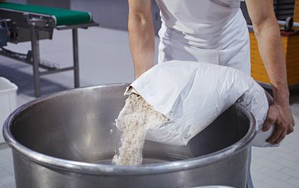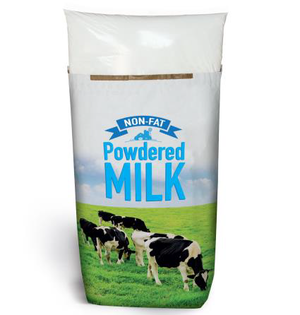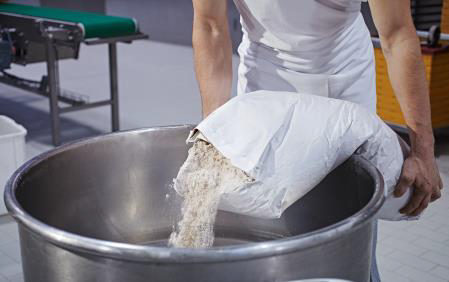“The food market is very interesting and complex at the same time,” explains Catherine Kerninon, General Delegate of EUROSAC, the European Federation of Multiwall Paper Sack Manufacturers. “Our industry has managed to keep a good demand in consistent growth. From 2015 to 2016 an increase of 6.4% paper sacks have been delivered.” They are mainly used to transport powdery food products such as sugar, flour, starch, food additives, aromatic herbs, processed or dried fruit, eggs or milk. Paper sacks for food are typically constructed as open mouth or valve sacks, and consist of two to three layers of paper and often in combination with a polyethylene (PE) free film tube inliner and/or coated paper. They use starch-based glue and water-based inks in order to avoid contamination risks. Their size and volume may differ according to the individual customer needs.

Paper sacks for food are typicallyconstructed as open mouth or valve sacks, and use starch-based glue and water-based inks in order to avoid contamination risks. Copyright: GemPSI
Natural properties yield benefits
Some food products such as flour or starch need to interact with air and moisture to prevent mould formation. Paper sacks are the best solution for these products. Thanks to their natural porosity, paper sacks enable the products to “breathe”. The air can escape from the sack while at the same time protecting the contents securely from outside influences. This allows for an economic filling process as well as easy palletisation. Paper also vents minor amounts of moisture so that no condensed moisture may occur inside the sacks. The fibres used to produce sack kraft paper are 100% natural and renewable. Thus, when using paper as packaging material, fillers choose the environmentally friendly solution that can also be recycled and composted at the end of their life.
Strict regulations provide high protection
“When producing paper sacks for food, producers face a large number of legal requirements that ensure hygiene and prevent any possible harm to health,” explains Kerninon. “Any food sack supplier should be certified by an independent accredited body according to the EU-wide safety standards for suppliers of food packaging.” Besides compliance with national and EU-wide rules and laws, they have to run migration tests and fulfil a hazard analysis and critical control points concept (HACCP). This includes, for example, protecting paper from moisture and mould, especially in warehousing; periodically checking glues used for joints and closure in order to prevent contamination risk from bacteria; and analysing risk of contamination from foreign material that might migrate during sack manufacture. Customers have their own requirements and audits. These may range from a further reduction of hygienic risks, for example in regard to procedures in the production area, sack closure, palletising and handling issues to the overall environmental and ethical performance along the supply chain.
Developments to meet legal and individual demands
“The food industry achieves continuous improvements thanks to internal and external regulations,” says Kerninon. “This leads the packaging producers to a consistent update on materials, technology and product innovation.” All sack kraft paper qualities from the main suppliers fulfil the relevant EU regulations and are transported in an adequate wrapping of protective paper to the converters. Concerning sack construction, many different sealing, barrier and coating concepts have been developed to ensure a tight closure of the sack and to protect the contents from moisture, oxygen, odours or migration of mineral oils, for example. An example of sack closure is a stepped end-bottom sack with hot melt on the mouth or other types of sealable valves. One of the developments concerning product protection is a hybrid sack with paper outside and an “easy peel” PE inlay inside.

For the packaging of dry dairy and related food products, paper sacks with an inner polypropylene bag which can be completely and easily separated from the outer paper plies offer a perfect product protection. Copyright: Mondi
Trends and expectations
“In the future, even higher requirements in the area of hygiene are expected by our members,” states Kerninon. “This may end up in a situation where only a few highly specialised sack producers will be capable of fulfilling the requirements of the most demanding customers and remain successful in the market.” Another trend they foresee is that the food industry will lead to a new standard for dust-free paper sacks. Especially customers in the Far East are very sensitive to even negligible amounts of spillage of powder from a paper sack usually tolerated in the EU market. In preparation for this development, the European paper sack and sack kraft paper industries have published industry guidelines for dust-free paper sacks.



